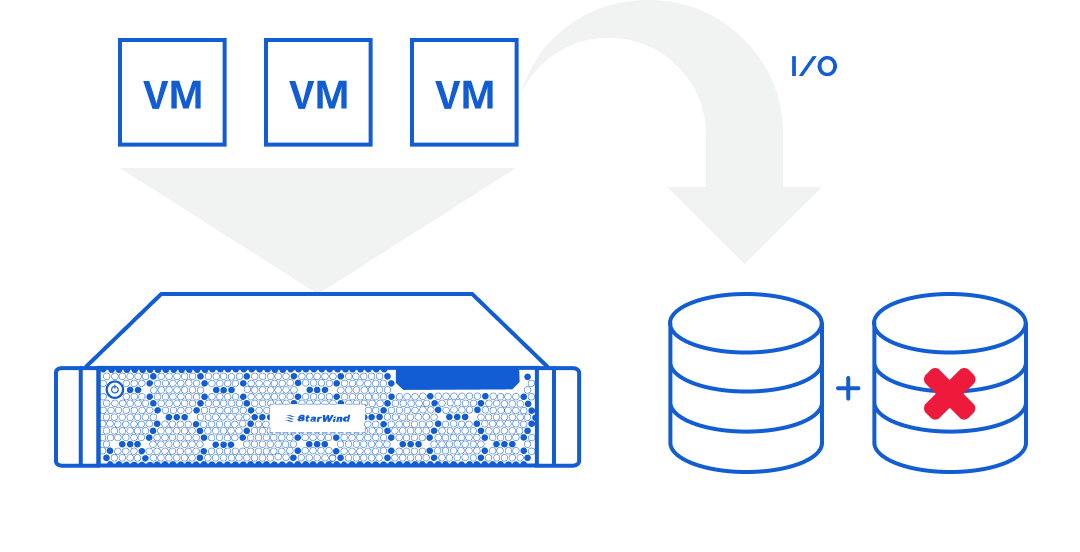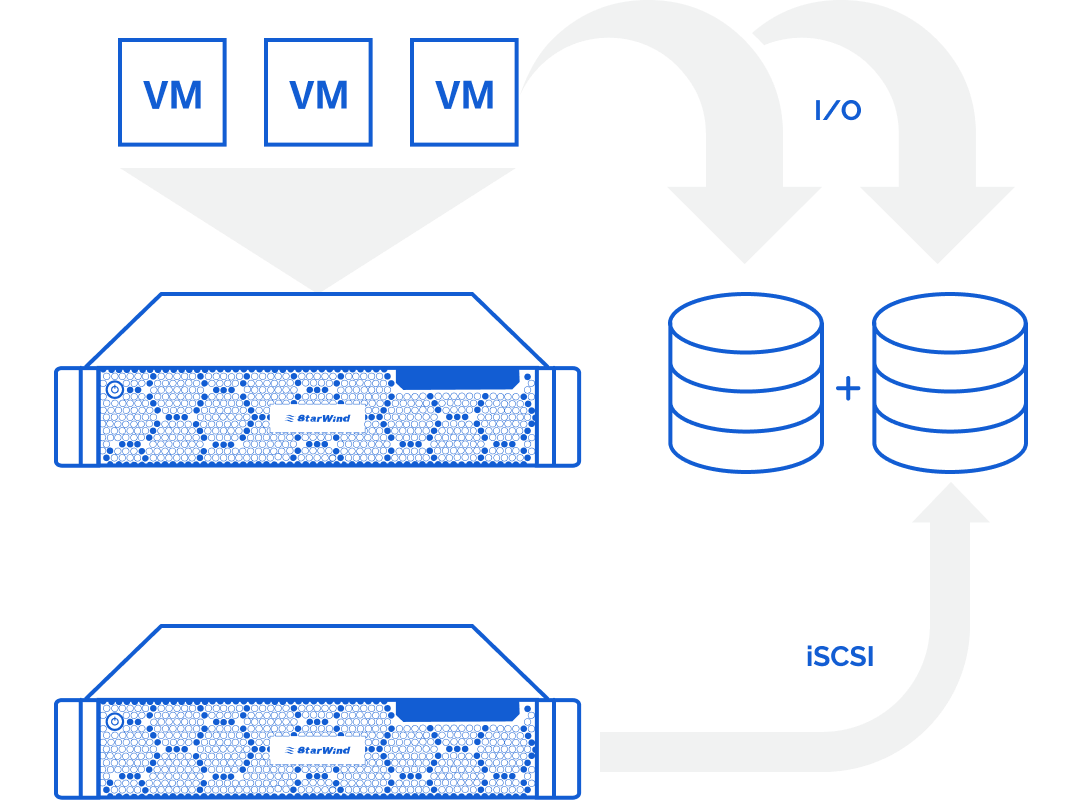iSCSI Storage – White Paper
- May 14, 2021
- 4 min read
- Download as PDF
INTRODUCTION
Modern businesses require storage in unprecedented amounts, which results in a demand for storage systems that are fast and can be easily accessed by multiple VMs and applications. The storage itself should preferably be highly available to ensure the designated applications can reach maximum uptime figures. Fibre Channel is one option to ensure such speed and throughput, but it will cost a pretty penny and requires definitive hardware to support itself. Fortunately, iSCSI, a block protocol that works over regular Ethernet, is easy to implement, fast, and perfectly fits any contemporary shared storage system.
PROBLEM
To function quickly and properly, a lot of applications nowadays, and VMs working on top of hypervisors, require block-level access to storage. This can be resolved by including more disk or flash drives into the respective servers. However, every server has limited slots for a limited number of drives.
Alternatively, to ensure optimal performance, clustered environments required shared storage and instantaneous levels of access to it. Such a storage system should also be highly available in order to handle any potential failure that any hardware component may encounter, even at the level of the storage itself.
With this in mind, there are various roads you could take to resolve these matters. Using physical shared storage and Fiber Channel are among them. But to build a Fiber Channel (FB) infrastructure, businesses would need dedicated HBAs and SANs with FB support, which will skyrocket the costs of addition and implementation.

Amount of storage that could be added to a single server is limited
SOLUTION
StarWind provides iSCSI storage to any industry-standard application and/or hypervisor. It’s capable of using any type of underlying storage that your need, whether local disks or storage connected through network. Thanks to StarWind Highly Available devices being shared via iSCSI network, your data will be replicated across multiple nodes, which increases uptime and handles multiple hardware failures.
StarWind running over iSCSI perpetuates that all that’s necessary for it to work and provide HA is regular Ethernet infrastructure. Subsequently, StarWind is innately simple in terms of deployment, which, in turn, minimizes integration costs and complexity. It also makes everything easier in operation. Additionally, StarWind iSCSI target enables performance at underlying storage levels, making it perfect for any workload.

Storage served via iSCSI is presented as local to applications
CONCLUSION
StarWind makes the most of iSCSI performance to provide maximum levels of High Availability storage to your desired applications and VMs. Other options on the market would require you to buy additional hardware and licensing to enjoy such benefits, but we strive to make IT accessible and simple wherever it’s needed. By using iSCSI properly, StarWind brings ease of deployment, administration simplicity, and implementation costs at possible minimum.

